

Max Davies
2026 Toyota HiAce review
1 Hour Ago
In Australia, we've missed out on generations of some of our top-selling vehicles. The question is: did we really miss out?

News Editor


News Editor
We often have to wait a while for vehicles revealed overseas to make their way to Australia.
For every vehicle like the first-generation Kia Niro, which arrived just a year before its replacement was due, there are multiple vehicles where we’ve ended up missing out on entire generations.
In some cases, it’s because the vehicle was only ever designed for other markets, or wasn’t produced in right-hand drive. In other cases, it’s because a company’s local division doesn’t see a place for the vehicle.
In this article, we’ll look at a few examples of where we’ve missed out on a generation of a vehicle that ended up becoming a top-seller… once it finally got here.
Ford has offered the Everest in Australia since 2015 as a wagon version of its popular Ranger ute. Prior to that, the Blue Oval brand offered the Raider from 1991 to 1996, a rebadged Mazda Proceed Marvie and therefore a wagon version of the Ford Courier/Mazda B-Series twins.
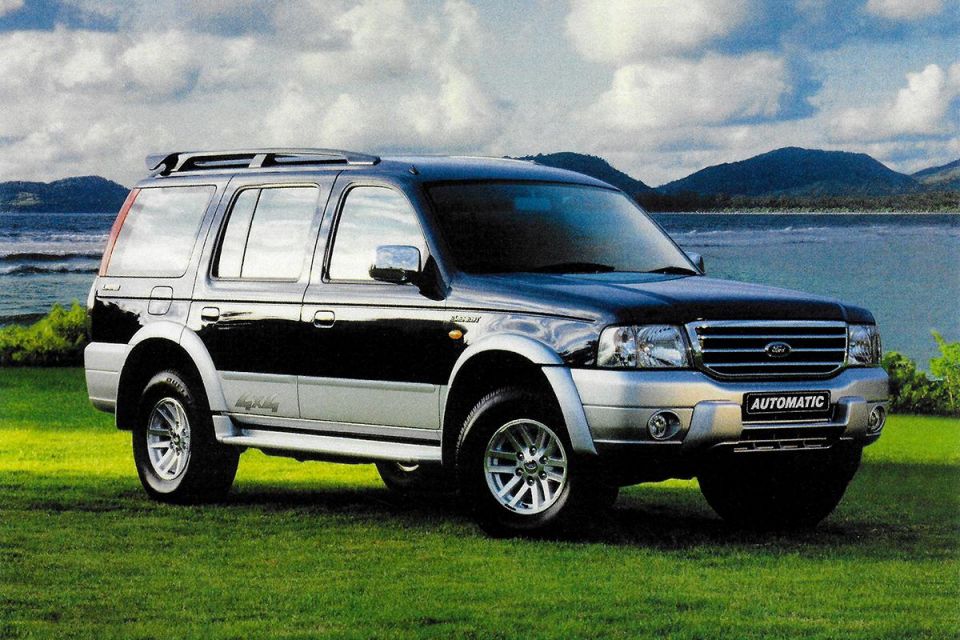
But there’s a missing link here, and that’s the first-generation Everest. Offered from 2003 to 2015, the Everest – known in some markets as the Endeavour – was a Ranger-based SUV designed for southeast Asian markets.
Revealed at the Bangkok motor show in 2003, the Everest cost US$100 million to create. Built in Thailand and assembled from completely knocked down (CKD) kits in India and Vietnam, the Everest retained the 1998-vintage ute’s styling from the B-pillars forward but incorporated a wagon rear end with a third row of seating.
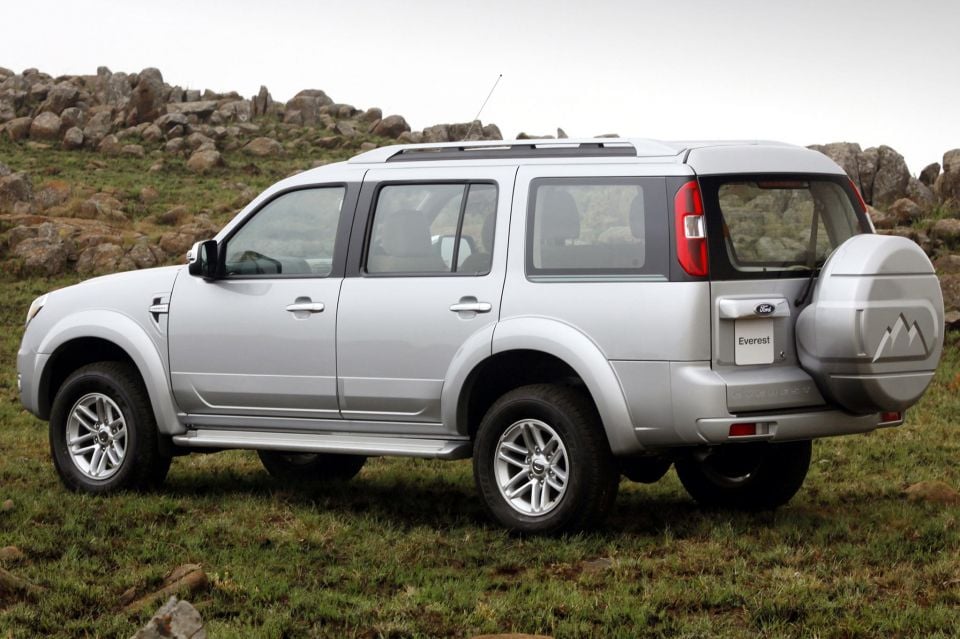
However, it retained the live rear axle and leaf springs of the Ranger, unlike the second-generation Everest which upgraded to coil springs. All up, it measured 4958mm long, 1805mm wide and 1835mm tall on a 2860mm wheelbase.
Engines consisted of a naturally aspirated 2.6-litre four-cylinder petrol engine and a 2.5-litre turbo-diesel four, with a choice of rear- or four-wheel drive with selectable low range gearing.
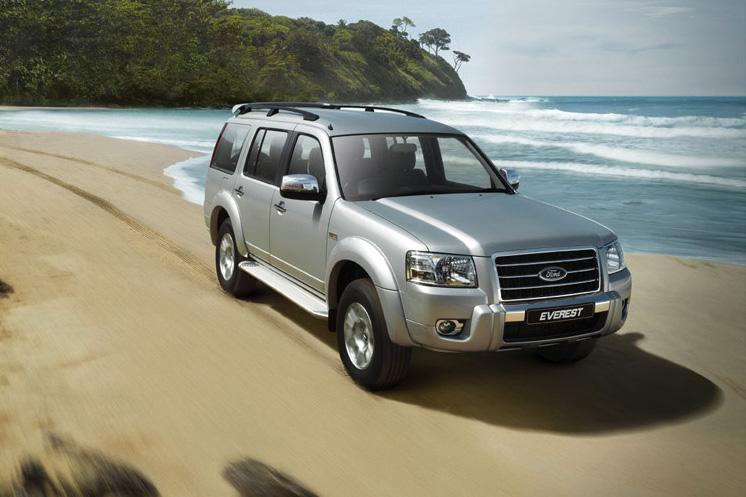
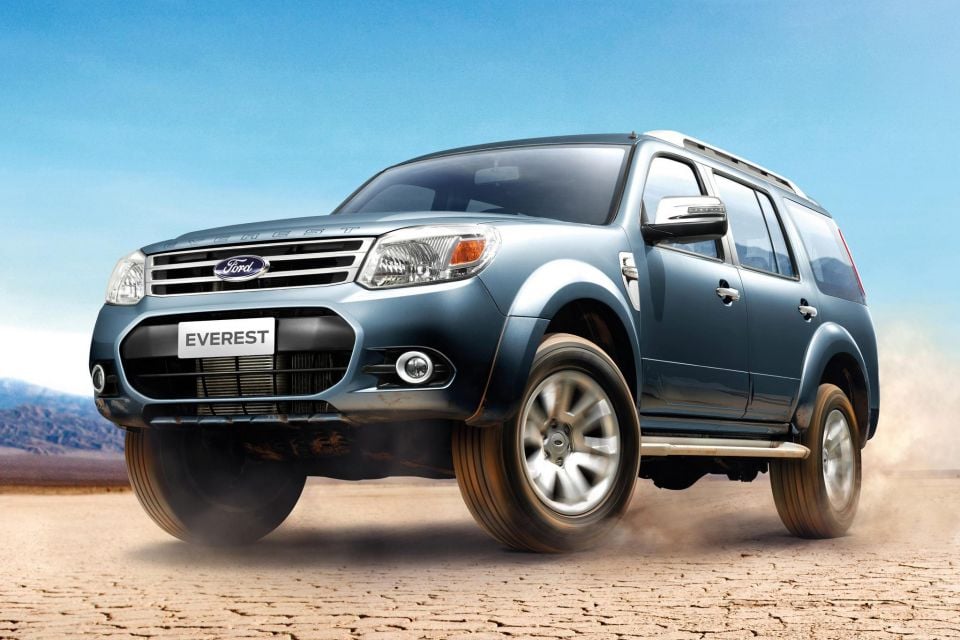
The Everest received several facelifts during its run, typically to align it visually with the related Ranger. It never came here, however – Ford had the US-sourced Explorer and then the Territory to offer to buyers looking for a three-row SUV.
With local manufacturing ending, Ford Australia needed a replacement for the Territory and therefore developed the second-generation Everest, which continued to be manufactured in Thailand but was now exported here.
Before the Caddy was a Golf-derived van, it was a Golf-derived ute.
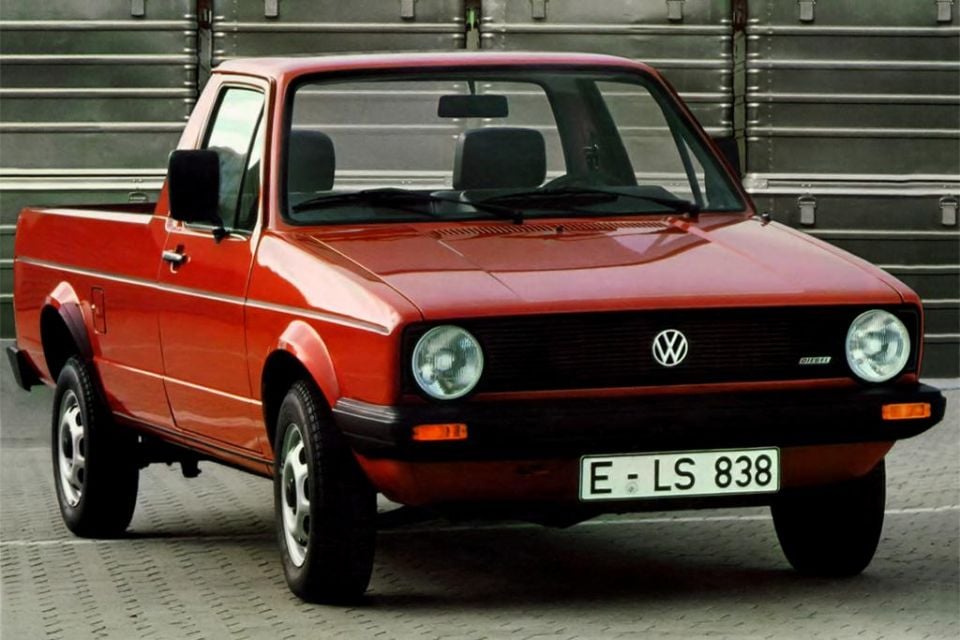
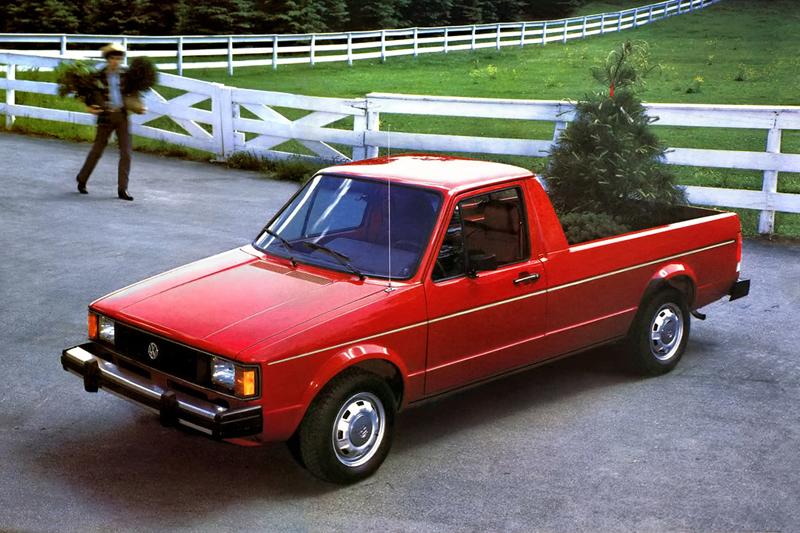
Known as the Rabbit Pickup in the US, where the Golf was built and sold as the Rabbit, the compact ute was introduced in 1979 and offered a 1.83m-long bed.
Being a car-derived ute, it had little direct competition besides the Subaru Brat (aka Brumby); the Dodge Rampage/Plymouth Scamp wouldn’t arrive until the 1980s.
The Pennsylvania-built Rabbit Pickup spawned the Caddy in 1982, built in Sarajevo until 1992 when war broke out; it was also produced in South Africa, where small bakkies were popular.
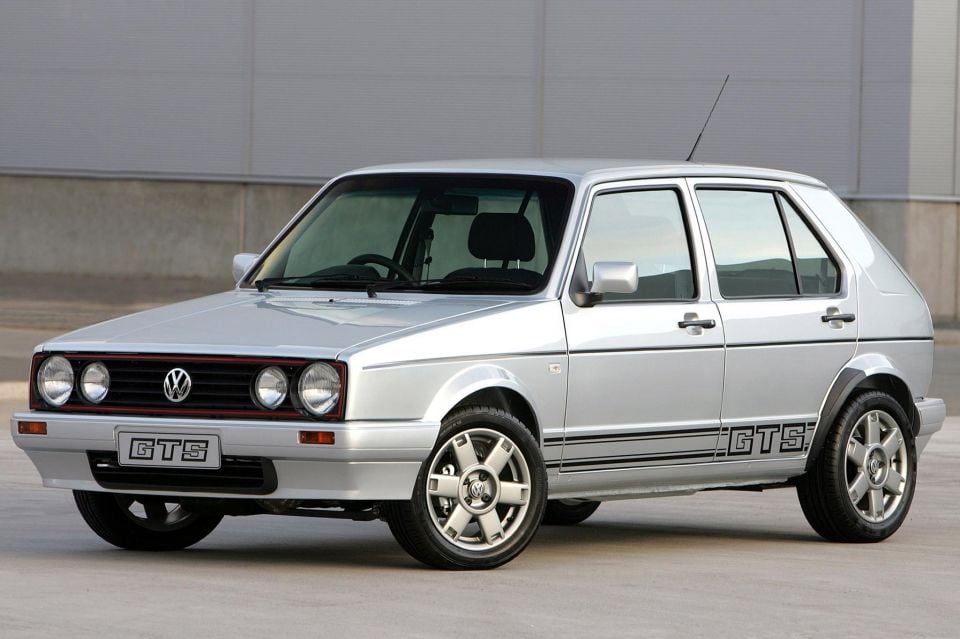
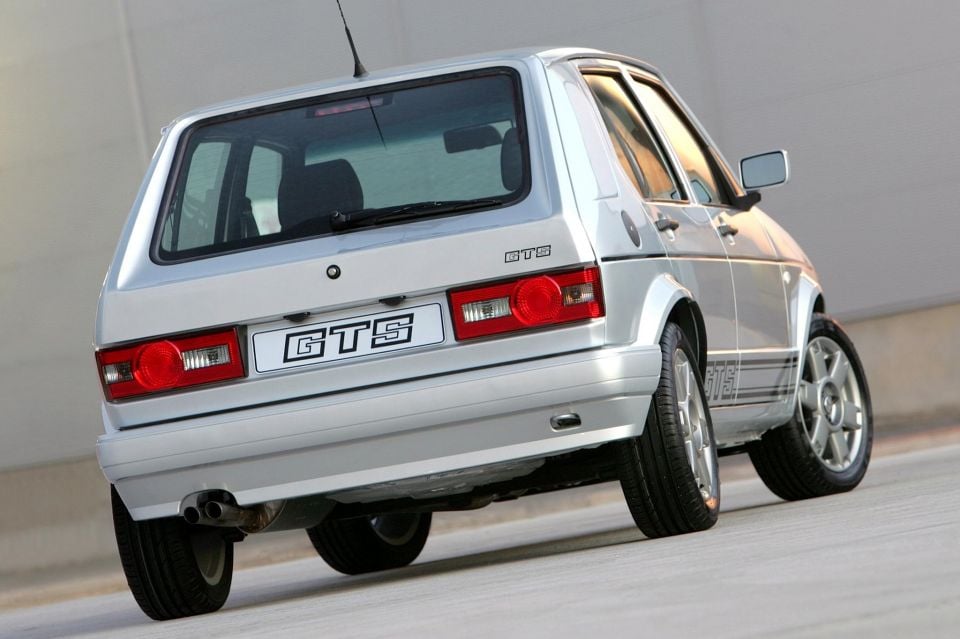
Remarkably, it continued being produced in South Africa until 2007. Even more remarkably, it was outlived by the Mk1 Golf-based Citi Golf, which finally exited production in 2009.
Volkswagen quotes worldwide sales of 207,000 vehicles for the first-generation Caddy.
Confusingly, the second-generation Caddy in Europe was actually two separate models, both mere rebadges of existing vehicles within the Volkswagen Group empire.
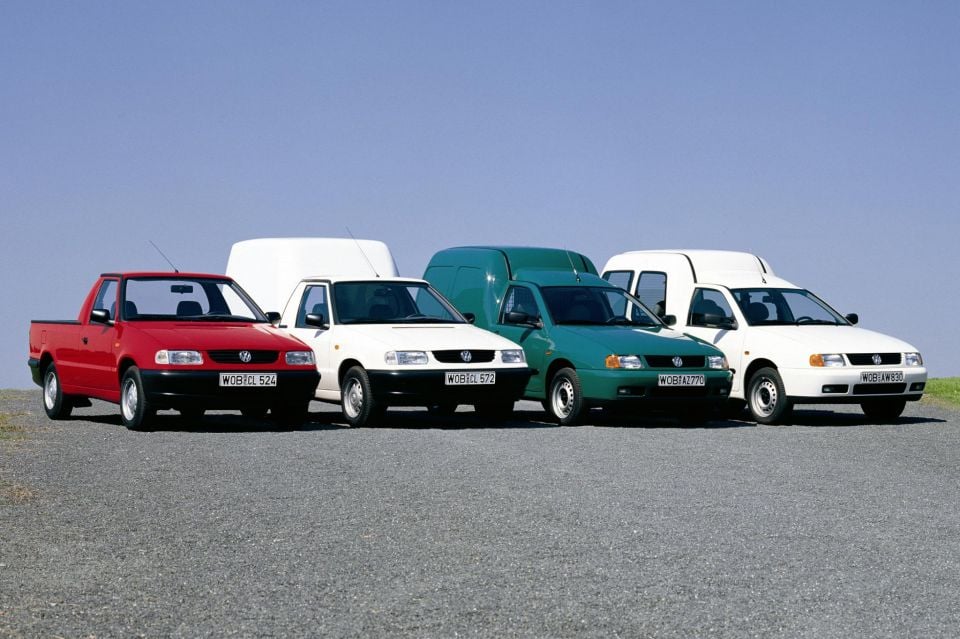
The new Caddy ute, introduced in 1996, was a Skoda Felicia Utility with the Volkswagen badge slapped on it, and was sourced from the same Czech plant as the Skoda.
The other Caddy was a bulbous van, manufactured in Spain. This was a rebadged SEAT Inca, the van version of the SEAT Cordoba and similar in style to the Holden Barina/Opel Corsa-derived Combo.
The Volkswagen brand also rebadged the Cordoba sedan and wagon as Polos in Europe, and the Ibiza hatch as the Polo Playa in South Africa.
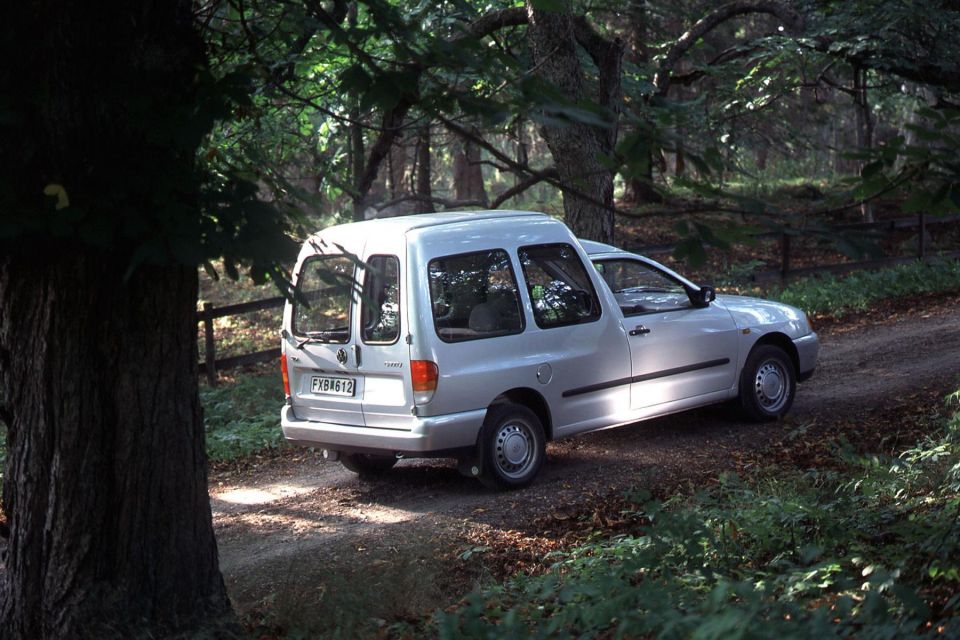
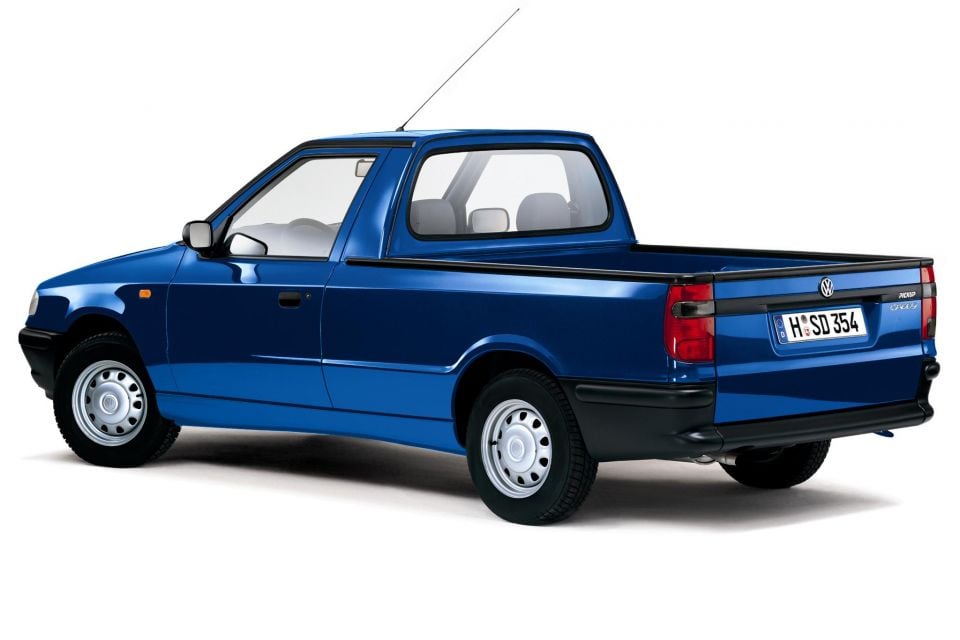
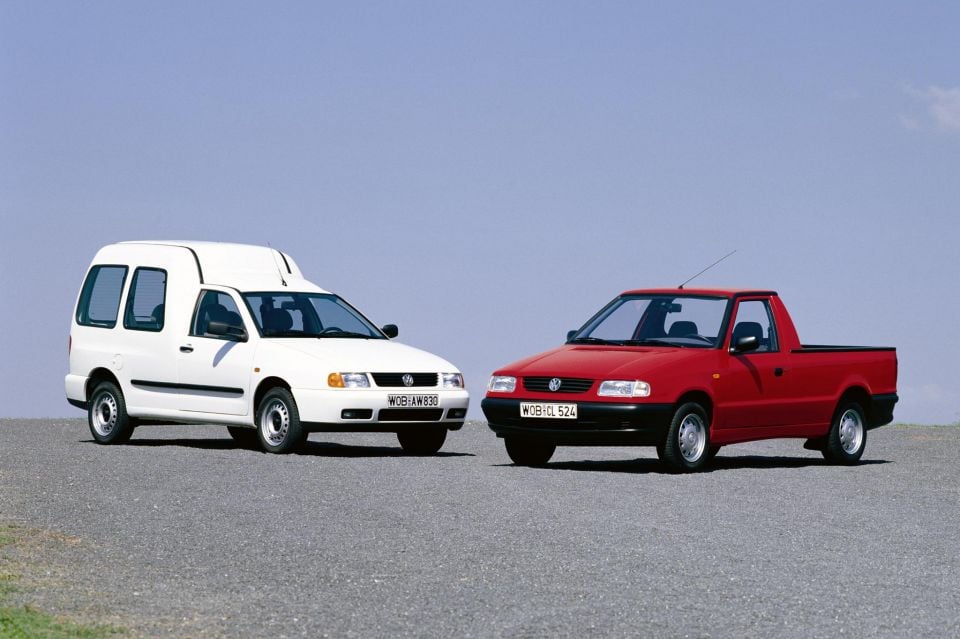
The new van spawned a people mover variant in 1997, rivalling the likes of the Citroen Berlingo Multispace. All up, the various second-generation Caddy models along with their SEAT and Skoda relatives accounted for 520,000 sales.
With the third-generation Caddy, introduced in 2003, the vehicle was once again based on the Golf. Production moved to Poland, and exports commenced to Australia.
The first Toyota Camry was introduced here in 1983 as an imported front-wheel drive five-door hatchback, sold alongside the more conservative rear-wheel drive Corona. This was the first generation of Camry, and entered production in 1982, with other markets also receiving a four-door sedan.

This wasn’t the first vehicle to use the Camry name, however. This model was pre-dated by the short-lived Celica Camry sedan, introduced in 1980 and sold exclusively in Japan.
Toyota has a well-established Japanese dealer network with separate channels. Until 2020, only certain Toyota vehicles were sold in each channel, and for many vehicles Toyota would typically do subtly different versions to distribute across each dealer channel.
For example, while we received the Cressida here, Japanese customers had the option of this along with subtly different Chaser and Cresta relations.
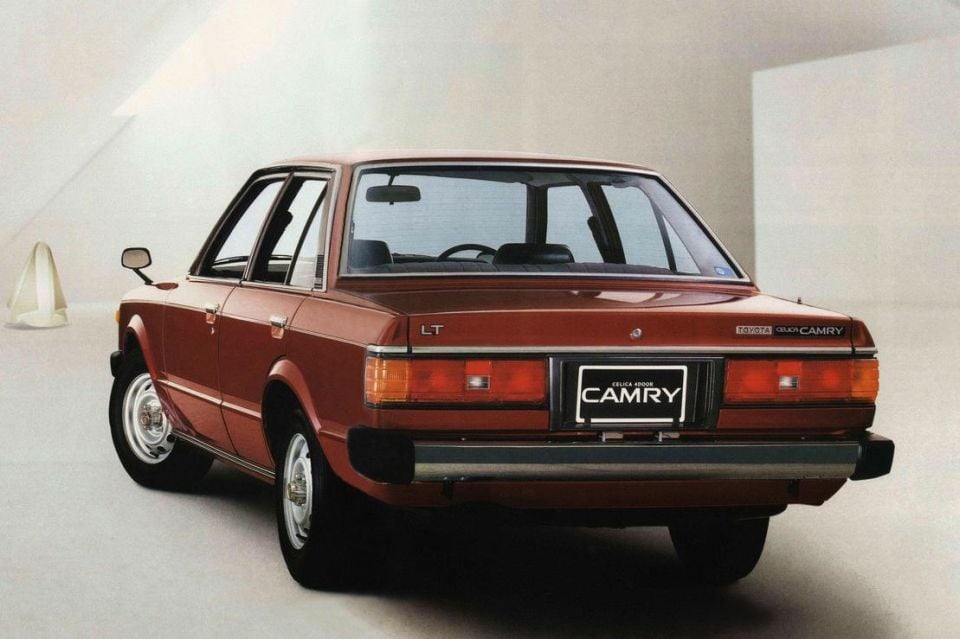
So it was that the Celica Camry was merely a version of the mid-sized Carina sedan for Toyota Corolla Store dealerships in the land of the rising sun.
It was sold alongside the two-door Celica which, though mechanically related, looked quite different. It also gave these dealers a sedan larger than the Corolla to sell.
The Celica Camry was scarcely different from the Carina in appearance, perhaps most easily identified by the distinctive T on the grille. The range consisted of 1.6-, 1.8-, and 2.0-litre four-cylinder engines, and most models featured a live rear axle.

Up-spec variants like the sporty 2000GT upgraded to four-wheel independent suspension with a semi-trailing arm set-up at the rear.
The Celica Camry was effectively a stopgap model, with the Camry replacing it at Toyota Corolla Store dealerships. True to form, Toyota also introduced a lightly restyled version of the new front-wheel drive model called the Vista, offered through its Vista dealers.
Thus far, this is the only generation of Celica to ever be offered with four doors.
While the Lexus ES isn’t a top 10 seller in Australia, it’s one of the more popular vehicles in its segment. It was the second vehicle launched by the brand locally and has remained a mostly consistent presence in Lexus showrooms in Australia, but we did miss out on a couple of generations.
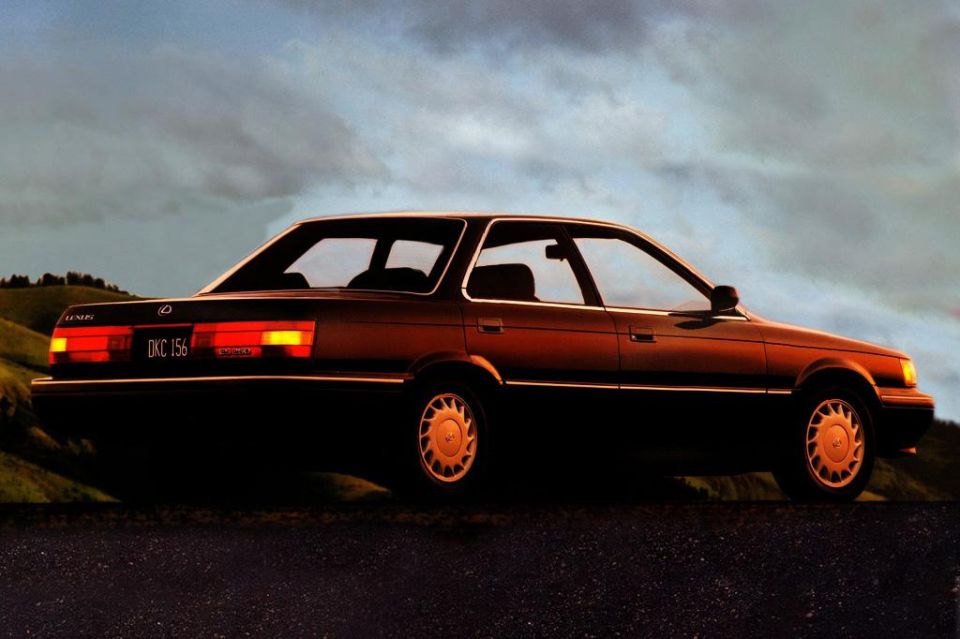

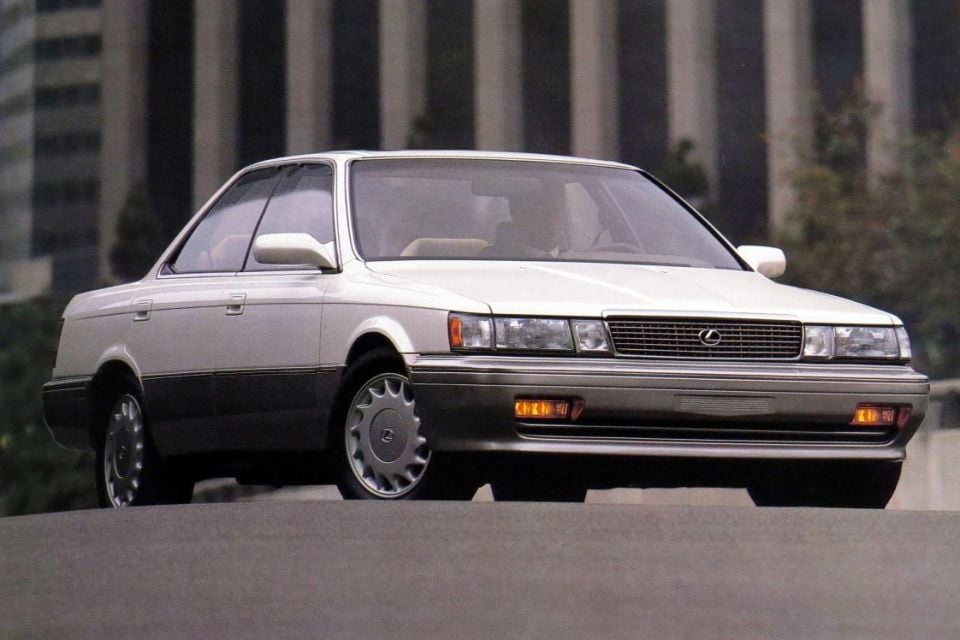
While the ES debuted locally in 1992, the nameplate first appeared in the US back in 1989 with the ES250.
Lexus had been developed with the US market front of mind, with the LS400 designed to tackle the best luxury sedans from Germany. But Toyota evidently didn’t want to introduce the brand with just a single model, so the LS was accompanied by the ES250, a version of the Japanese-market Toyota Camry Prominent.
The SC coupe, known as the Toyota Soarer in Japan, followed in 1991.
Nissan had done a similar thing with Infiniti, also launched in 1989 with a specially designed flagship sedan (the Q45) supplemented with a couple of more affordable models. But like the Infiniti M30 (a Nissan Leopard in Japan), the Lexus ES250 was an older vehicle.

The V20-series Toyota Camry and its spinoffs had entered production in 1986, so the ES250 was a vehicle already halfway through its model cycle. It also looked uncomfortably like a Camry, and was the only front-wheel drive Lexus.
It was at least based on the unique “hardtop” sedan body style not offered by the Toyota brand in the US, and forewent four-cylinder engines for a standard 116kW 2.5-litre V6 mated with either a five-speed manual or four-speed automatic.
It undercut the Acura (née Honda) Legend by around US$3000, though it was $5000 more expensive than a Camry V6. US buyers did get a full range of power accessories, extra sound deadening and real bird’s eye maple trim, plus the Lexus dealership experience, but that was a steep premium for a vehicle essentially identical mechanically. The costlier LS400 ended up outselling it by more than 2-to-1.
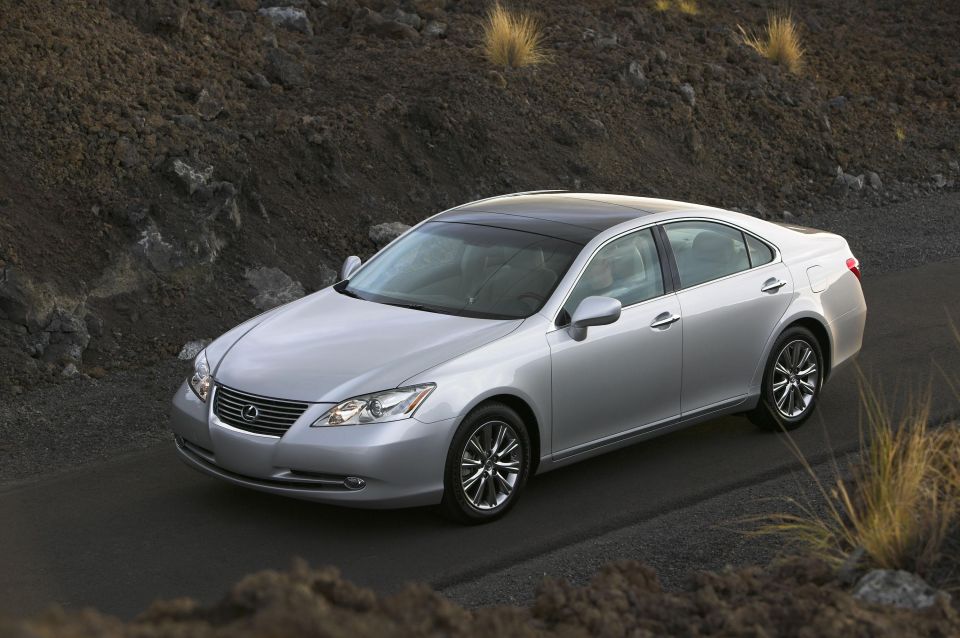
The second-generation ES would stick with front-wheel drive and Camry mechanicals, but it had dramatically different styling from its more affordable Toyota relation; it was sold as the Windom in Japan, where Lexus wouldn’t exist as its own brand until 2005.
We received every generation of ES until the fifth generation of 2006. Sales of the rather awkwardly styled fourth-generation model had trailed off in Australia, and the fifth-generation model ended up being produced only in left-hand drive.
Lexus clearly figured it had its sedan bases covered with the IS and GS at this end of the market; the ES, unlike those, was front-wheel drive and more overtly comfort-focused, being derived from the Toyota Camry and aimed predominantly at the US market.
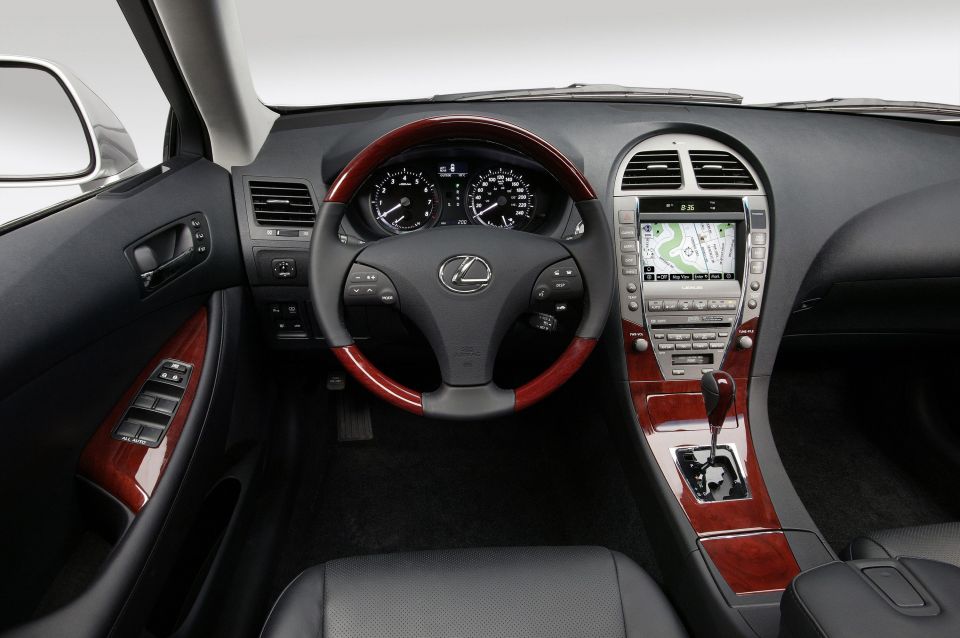
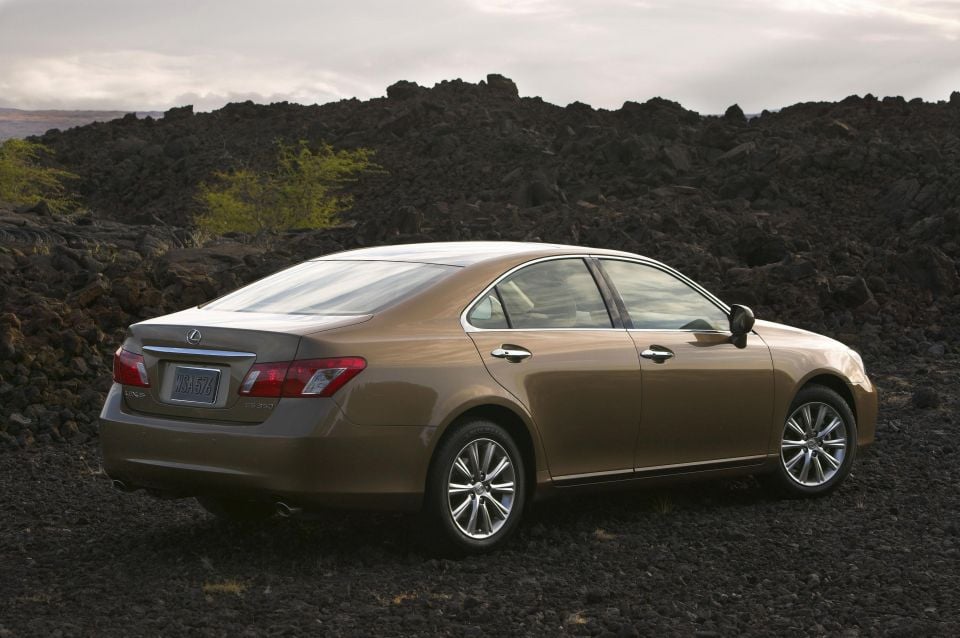
The fifth-generation ES adopted a more powerful 203kW 3.5-litre V6 engine, though a 2.4-litre four-cylinder engine was offered in some Asian markets. It was the first ES generation with features like adaptive cruise control, a panoramic sunroof, and rain-sensing wipers, among others.
The ES was Lexus’ second best-selling vehicle globally, and Lexus decided to reverse course with the sixth generation and once again build it in right-hand drive. Now sharing its underpinnings with the Toyota Avalon, the ES returned to Australia and offered an available hybrid powertrain.
Lexus is now onto the seventh generation ES which, following the global discontinuation of the GS and the local axing of the IS due to stricter safety standards, is now the brand’s only sub-LS sedan locally.
William Stopford is an automotive journalist with a passion for mainstream cars, automotive history and overseas auto markets.


Max Davies
1 Hour Ago


William Stopford
17 Hours Ago


Ben Zachariah
18 Hours Ago


Derek Fung
19 Hours Ago


Matt Campbell
1 Day Ago


William Stopford
2 Days Ago